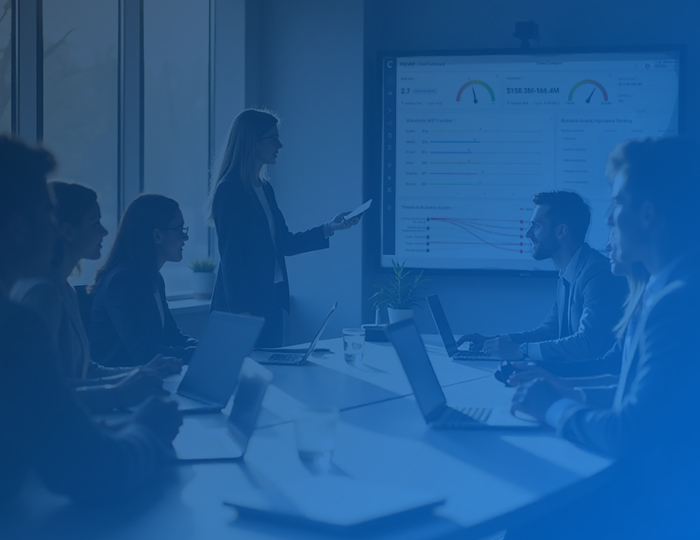What is the Difference Between Mitigation vs Remediation?
Mitigation vs remediation are often used interchangeably in threat intelligence and cybersecurity. Yet there is an important difference between the two: Mitigation refers to a set of actions taken to minimize the severity and impact of an exploited vulnerability, being a proactive security approach focused on planning ahead, while remediation describes a reactive approach to fixing a vulnerability once identified, or a way to “put out the fire,” so to speak.
Also, mitigation should typically begin with a thorough cyber risk assessment to understand the organization’s existing threat surface and benchmark it to previous baselines before planning any triage, whereas remediation involves threat containment and isolation of affected areas once detected. Incident response teams focus on identifying the root cause and containing the threat before establishing a concrete plan of action to prevent the threat from recurring.
Cybersecurity and Infrastructure Security Agency (CISA) recommends that high-risk vulnerabilities be remediated within 30 days, and critical vulnerabilities must be remediated within 15 days of detection. But this is where the challenge begins for security teams. A recent study found that critical vulnerabilities take 4.5 months to remediate on average. The longer a critical vulnerability is left undetected, the greater the overall damage and the higher the likelihood of a breach.
How the Remediation Process Works
Remediation begins by identifying critical assets at the highest risk and prioritizing them based on the potential impact on the business. Remediation plans vary by incident, severity, organization size, and available resources to contain the threats.
Remediation can be an extremely complex process. A recent study found that 68% of organizations leave critical vulnerabilities unresolved for over 24 hours, with 35% citing a lack of context that hampered their remediation efforts.
Other factors to consider before any plan of action is drawn:
- Size of the organization (enterprise vs SMB)
- Severity of damages to critical systems and infrastructure
- Scope of critical assets at the highest risk (i.e. financial records, PII, product designs)
- The amount of time the critical vulnerability has been exposed
- The immediate and long-term business impact
Identified Vulnerabilities: What Should You Prioritize?
Context is key when it comes to effective vulnerability remediation, because it can help you prioritize critical vulnerabilities before they escalate. Context provides insight into how a vulnerability maps to your specific environment. Security teams can also leverage various vulnerability risk scoring systems and frameworks to assist in remediation.
The Common Vulnerability Scoring System (CVSS) is a widely used framework that assigns a score from 0 to 10 to assess the level and severity of a given vulnerability. CVSS scores can be broken down into categories:
- Base metrics (attack vector, attack complexity, scope)
- Temporal metrics (exploit code maturity, remediation level, report confidence)
- Environmental metrics (security requirements and other factors that may change over time)
CVSS differentiates from CVE in that it offers more context beyond the basic cataloging and classification of a vulnerability. CVE is a publicly disclosed catalog and identifier of vulnerabilities, while CVSS scores help security teams prioritize which vulnerabilities require immediate attention.
4 Steps of the Vulnerability Remediation Process
- Identification: A new vulnerability emerges approximately every 17 minutes. The challenge is finding the critical vulnerabilities in existing environments, applications, and systems. A risk assessment should get the ball rolling, but an even more effective method of finding vulnerabilities is by conducting a penetration test. Pen tests are highly effective simulated cyberattacks that provide deeper insights into an attacker’s game plan.
- Prioritization: Once identified, the vulnerabilities are then assigned scores based on severity and impact to business operations. These details serve as a roadmap for security teams to begin triage and allocate resources intelligently.
- Remediation: The process of eliminating vulnerabilities. This might involve patching, network segmentation, access control adjustments, and complete system configurations.
- Reporting: The final step in the vulnerability remediation process is tracking and monitoring progress over time. It’s essential to establish actionable KPIs that can be benchmarked to measure effectiveness, and, more importantly, for CISOs to communicate risk reduction when presenting to the board.
3 Highly Effective Remediation Techniques to Consider
1. Patching
A quick patch can help prevent a breach. Patching helps fix bugs that enable threat actors to elevate privileges and potentially spread malware or launch an attack. Patching sounds quite simple in theory, but in most cases, the critical vulnerabilities are left for long periods without any remediation plans. Research conducted by Google Mandiant found that the average Time-to-Exploit (TTE) of a vulnerability dropped from 32 to just 5 days. Patching should be a top remediation priority.
2. Network segmentation
Endpoints are prime targets for attackers, especially for remote workers. A study found that 68% of organizations experienced a targeted endpoint attack that compromised their data or IT infrastructure. All devices should not be treated equally. Network segmentation can make the remediation process more efficient by isolating high-risk devices or systems from an organization’s corporate network.
3. Limiting access privileges
A study found over 3 million Fortune 500 employee accounts had been compromised since 2022 due to the growing threat of infostealer malware. The study also saw a 4x spike in compromised telecom accounts, exposing critical digital infrastructure. Security teams should implement the principle of least privilege access to prevent such incidents and minimize any damage if credentials are compromised.
Security Risks of Mitigation vs Remediation
Although both processes are crucial, there are a few security risks to consider when planning mitigation or remediation strategies.
- There is always a likelihood of vulnerabilities existing in third-party environments
- Mitigation fatigue, particularly with smaller teams and less budget
- Risk for prolonged downtime and operational disruptions due to traffic filtering (especially prevalent in legacy systems and architectures)
- Risk of lateral movement if critical vulnerabilities are left undetected
- Exploit tools can breach unpatched third-party systems if access to critical assets hasn’t been restricted or revoked
- Zero-day vulnerability exploits
Effective Mitigation Tools
There are several mitigation tools worth adding to your threat hunting and security arsenal, each offering distinct advantages and limitations.
Intrusion Prevention Systems (IPS)
An IPS identifies suspicious network activity or traffic and blocks malicious content. An IPS provides signature-based detection methods to analyze malicious packets and alert security teams to the threats in real time. Security teams can enforce policies that complement their mitigation strategies.
Limitations:
- It can introduce network latency
- An IPS can block legitimate traffic and mistake it for suspicious activity
- High false positive rates
- Reliance on digital signatures
Endpoint Detection and Response (EDR)
An EDR continuously monitors threats on devices to assist in the mitigation process. They are essential for isolating high-risk devices from the network, particularly important for remote workers who access sensitive company data over insecure Wi-Fi or public hotspots.
Limitations:
- Complex to manage and configure
- High Total Cost of Ownership (TCO)
- Limited against advanced evasion tactics
- Alert fatigue
- High consumption of resources (CPU, memory, and network bandwidth)
Security Orchestration, Automation, and Response (SOAR)
SOAR is a suite of cybersecurity tools and technologies that help security teams proactively mitigate threats and reduce the burden of manual processes. SOAR differentiates from SIEM, which is primarily used for logging and analyzing security events. While SIEM focuses on data aggregation and alerting, SOAR automates and orchestrates the response, enabling security teams to act faster and more consistently.
SOAR also helps analysts consolidate data from disparate sources, such as SIEMs, EDRs, threat intelligence feeds, and firewalls.
Limitations:
- Complex setup and configuration
- Integration is limited
- Poorly designed playbooks that incorporate a “one-size-fits-all” approach
Conducting Regular Security Assessments
Security assessments should be conducted on a routine basis. A lot of things can change in an organization within the blink of an eye. A CISO might leave. A collection of new technologies could be implemented seemingly overnight. Employees may change roles, and third-party vendors no longer under contract may still have access to shared cloud environments beyond the visibility of the security team.
Any of these sudden changes can introduce critical vulnerabilities into the organization. Regular assessments ensure that the organization’s security posture is equipped to deal with the latest threats and assist with effective mitigation planning.
Weighing the Costs of Mitigation vs Remediation
Should you take a proactive approach or a reactive one?
Both approaches have their advantages and disadvantages. Both can eat away at your budget quickly and lead to tool sprawl, where an organization accumulates a collection of security tools that may be used sparingly or not at all. Assuming that budget is available.
Before you weigh the costs of both approaches, you must have a good understanding of your organization and the current security posture. Perform a cost-benefit analysis and include the following considerations:
- Incident history (document all details and benchmark either by quarter or YoY)
- Third-party risk exposure
- Tool evaluation (what exists and what is lacking)
- Skilled personnel and team (consider outsourcing as an option)
- Risk appetite level
- Miscellaneous considerations (scalability, internal turnover, tool integrations)
Follow your cost-benefit analysis and leave room for flexibility.
How CISOs Should Approach Mitigation vs Remediation Planning
CISOs have a lot to consider when deciding on which approach to choose.
- The number of critical vulnerabilities that directly impact business-critical assets
- The cost of downtime if an incident arises
- Compliance and regulatory changes
- Third parties with access to sensitive data
- Risk tolerance (will a new tool disrupt business operations?)
The biggest challenge oftentimes is securing budget approval or briefing the board during a review. Research showed that 12% of CISOs faced budget declines in 2024. Budget approval can be a fierce battle.
This is where threat exposure metrics and KPIs can help win the support of the board. KPIs help CISOs translate risk into profit. It addresses whether those new security tools will yield the returns needed to justify budget approval. KPIs also provide insights into how investments will reduce potential losses and ultimately improve the overall security posture of the organization.
Minimize the Attack Surface with CYE
Regardless of which approach best suits your organization’s needs, it’s important to assign a value to each vulnerability.
CYE’s Hyver platform provides you with tailored mitigation planning and enables you to prioritize remediation strategies based on your threat exposure. Hyver’s mitigation planner provides you with a clear snapshot of which business-critical assets are at the highest risk, so you can plan mitigation strategies and allocate budget accordingly.
Schedule a demo today and learn how Hyver can help you make more optimized mitigation decisions.









